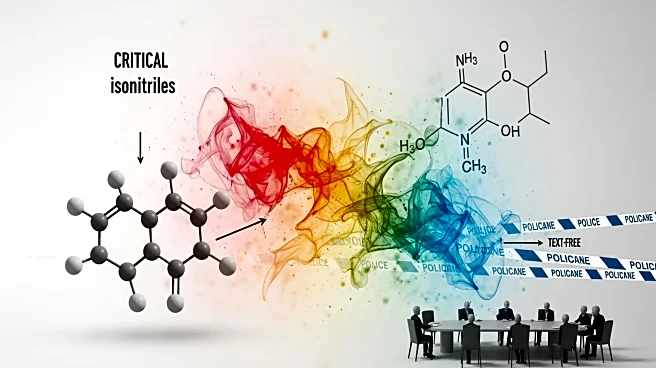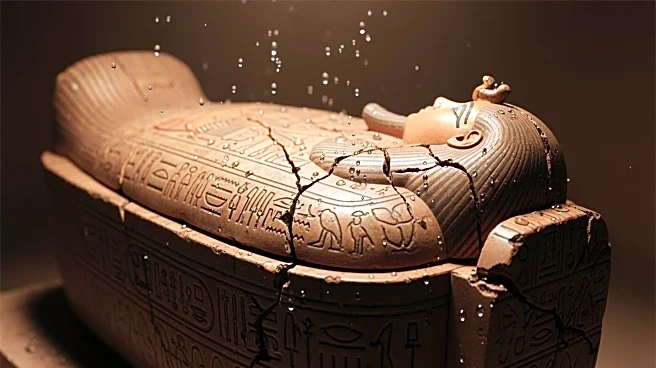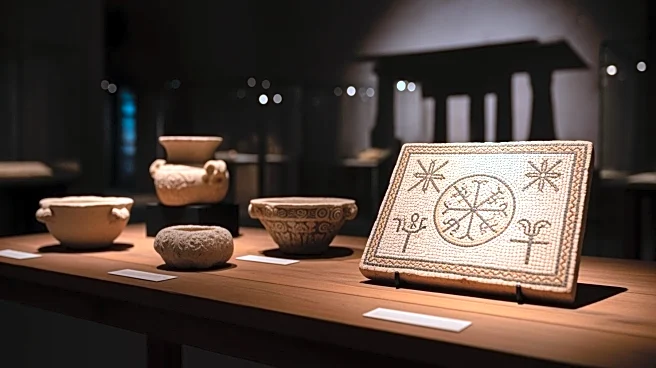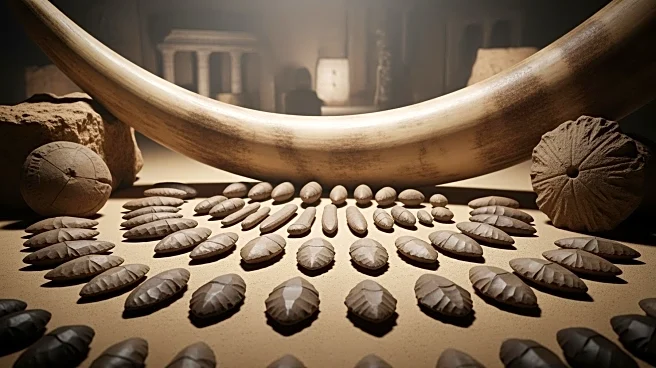What's Happening?
A recent study has employed K-means analysis to determine the origin characteristics of Ming-Qing inscriptionless blue bricks. Researchers used X-ray fluorescence (XRF) and X-ray diffraction (XRD) to analyze the chemical compositions and mineral phases
of the bricks. The study identified four distinct categories based on elemental content and mineral phases, revealing variations in firing temperatures and regional differences. The analysis showed that the firing process does not affect the concentration of major elements but can alter the mineral structure. The study highlights the importance of combining XRF and XRD methods for more accurate origin analysis.
Why It's Important?
Understanding the origin and characteristics of historical construction materials like Ming-Qing blue bricks is crucial for archaeological research and cultural heritage preservation. The study provides insights into ancient manufacturing techniques and regional variations in brick production. By identifying the elemental and mineral composition, researchers can better understand the technological advancements and trade practices of the Ming-Qing era. This knowledge can aid in the restoration and conservation of historical sites, ensuring the preservation of cultural heritage for future generations.
What's Next?
The study suggests further research into the firing processes and regional variations of blue bricks to enhance the accuracy of origin analysis. Researchers may explore additional analytical methods to complement XRF and XRD, such as neutron activation analysis or inductively coupled plasma atomic emission spectroscopy. The findings could lead to improved techniques for identifying and preserving historical construction materials, contributing to the broader field of archaeology and cultural heritage conservation.
Beyond the Headlines
The study's findings have implications for the broader understanding of historical construction practices and materials science. By revealing the complexities of ancient brick production, the research challenges modern assumptions about historical manufacturing techniques. It also highlights the importance of interdisciplinary approaches in archaeology, combining chemistry, physics, and history to uncover the past. The study may inspire further exploration of other historical materials, contributing to a more comprehensive understanding of ancient technologies.













